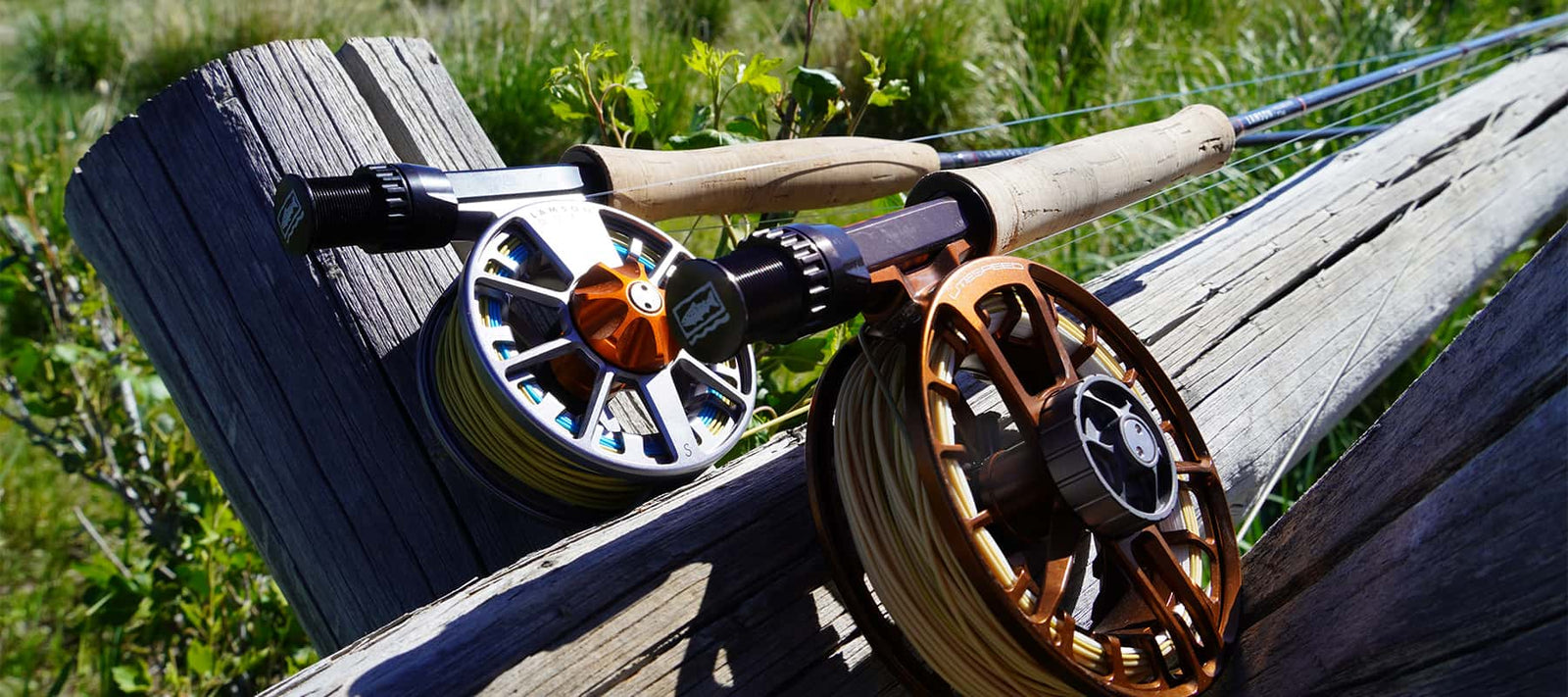For Your Rod
For Your Person
For A Boat, Plane, Or Car
Clothing & Camo
Gear

Lamson fly reels actually have an interesting history before Lamson was even a part of the company. It all started when Waterworks was formed in 1996 when fishermen who happened to be product designers figured a better way to release a fly-caught fish. The status quo, the hemostat, wasn't good for the fish or the fly. Their solution was an innovative tool that allowed a fish to be released without handling, and the fly to remain intact. Named after their hometown in Idaho, they called the tool the Ketchum Release.
Those same fishermen were also bicycle enthusiasts and prior to forming Waterworks, had honed their skills in the world of high performance cycling, creating and patenting cutting-edge components and mountain bike suspension technology. Eventually turning their focus to the fly reel was a logical thing to do: Reels were, essentially, a wheel on a frame.
In 1998, Waterworks acquired Lamson and, along with Waterworks Force reels, now had two brands sharing the core technology and design ethos of simplicity and function-driven styling. The line-up of Lamson fly reels has radiated into specialized niches over time: two handed, salt water, super-arbor, and rugged environments. The pursuit of inspired design and solid engineering has driven Waterworks Lamson's fly reel innovation for two decades, with no end in sight.
Waterworks Lamson's goal has been to make gear so technically fluid you can almost forget it's there. How? By eliminating complexity, reducing weight, streamlining design, and using advanced materials and cutting edge processes.
CONICAL DRAG
When they created their first fly reel, Waterworks Lamson set out to engineer the best drag system possible: Zero start-up torque with adequate range. Smooth operation. Sealed from the environment. Reliable and maintenance free. Plus compact, light and technically simple. No sweat, right? They imagined a mechanical solution for a reel that probably seems obvious today: storing line on a large-circumference spool supported by a lightweight frame. But typical drag systems of the time were based on flat counter-rotating discs. Counterproductive. It occurred to us that the same surface area of discs could be configured into a pair of matched cones machined with angular precision. This resulted in a significant reduction in the diameter of the assembly, making it small, light and easy to seal. They also sourced proprietary friction materials that produced zero start-up torque which could run without lubrication.
POWER ARM
Due to their proprietary conical drag, Waterworks-Lamson set out to develop a distinct and efficient frame. The Power Arm frame design is a way of aligning the structural support for the spool along the primary load path. The primary load path for any fly reel runs from the center of the drag core to the reel foot. It’s logical to put most of the material along that load path. Any distribution of material not aligned with the primary load path will result in either a structure that’s too flexible—or heavier than it needs to be. The Power Arm design uses the least amount of material to achieve the maximum stiffness.
INTEGRATED COUNTERBALANCE
Another structural theme built into Waterworks-Lamson reels: integrated counterbalance. Why hang a piece of hardware on a spool if there’s a simpler way? But simple isn’t always easier. Their earliest spools required a fair amount of trial and error to build the precise bias into the spool to counter the weight of the spin knob. The elegance of eliminating a component and then using the resultant asymmetry as part of the design made all the effort worth it. This simple, logical, but often difficult feature became essential to the personality of all Waterworks-Lamson fly reels.
For 20 years, Waterworks-Lamson has set a bold benchmark for innovative fly reel architecture.
Large arbor, lightweight, sealed systems, zero maintenance, advanced materials, state of the art machining, innovative and enviable styling—the list is long. They are probably best known for their innovative conical drag. Most hub/disc drags use a couple of flat, round discs or washers, commonly where a metal surface meets a slippery surface like Rulon, Delrin or oiled cork. When the drag is tightened the surfaces are forced together – more friction and therefore more drag. To make a powerful drag which is also a smooth drag, a larger area of contact is needed: bigger discs or more discs. So, rather than flat discs, Waterworks-Lamson thought "how about we make a cone shape?" Assume a drag housing with the same diameters inside and out, and the conical drag has a larger area surface contact – which makes for a smoother and more powerful drag.
Hold the reel in your hands with the drag knob facing you. Place your fingertips around the edge of the reel case and place your thumbs in the ports against the spool. Push the spool away from the case. You will feel the reel “click” as the o-ring unseats from its groove. Withdraw the spool from the body.
Important: When changing your Waterworks-Lamson reel retrieve, do not remove the drag knob or the black nut with two small holes in it. First, with the drag knob facing you, remove the spool (by holding the edge of the case with your fingers push your thumbs through the ports of the case and push the spool out). Put the spool aside. Holding the frame/case in your hand, unscrew the black cap with gear teeth at the end of the center cylinder. The clutch should fall out (tap lightly on flat surface if necessary). Flip the clutch over and reinstall. Female notches on the clutch must fit into male notches inside the cylinder. To ensure the clutch is fully seated and notches are properly engaged, use your pinky, ball point pen or similar clean tool to rotate clutch as necessary. Reinstall the cap by hand.
